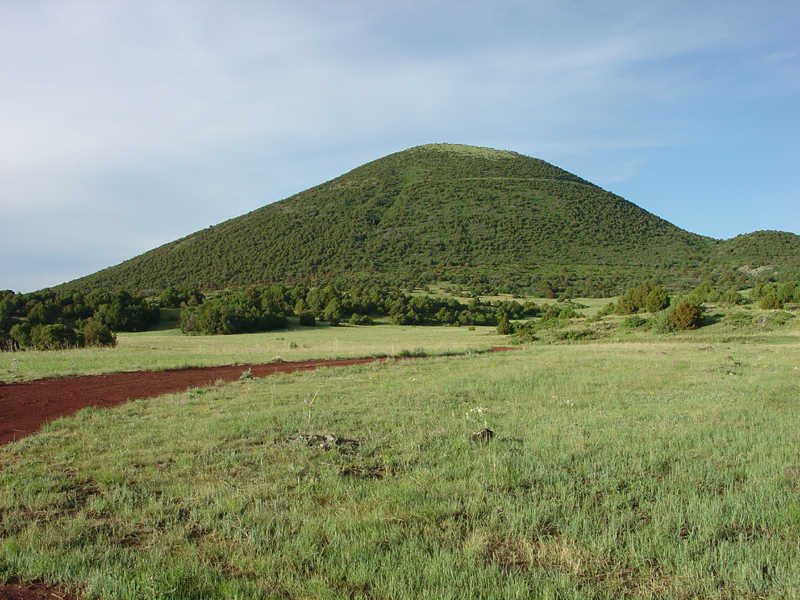
This view is looking toward Capulin Mountain. "Capulin Volcano National Monument was established in 1916 to preserve this striking example of a volcanic cinder cone" (USGS, 2008). The volcanism that formed Capulin Mountain (volcano) was the youngest phase of volcanism in the greater Rayton-Clayton Volcanic Field in northeastern New Mexico. Volcanism in the region began about 9 million years ago and eruptive periods continued intermittently until the youngest, the Capulin phase, took place beginning about 1.68 million years ago (Stroud, 1997). Earlier estimates by Scott and others (1990) describe the Capulin Basalt, the rock that makes up the cinder cone and the surrounding flows. More recent review of radiometric ages suggest that the Capulin cinder cone formed about, 56,000 years ago (Aubele and Crumpler, 2001). Although Capulin Mountain is considered no longer active, because its excellent condition the cinder cone is considered one of the best and accessible examples of a cinder cone in North America (Stormer, 1987).